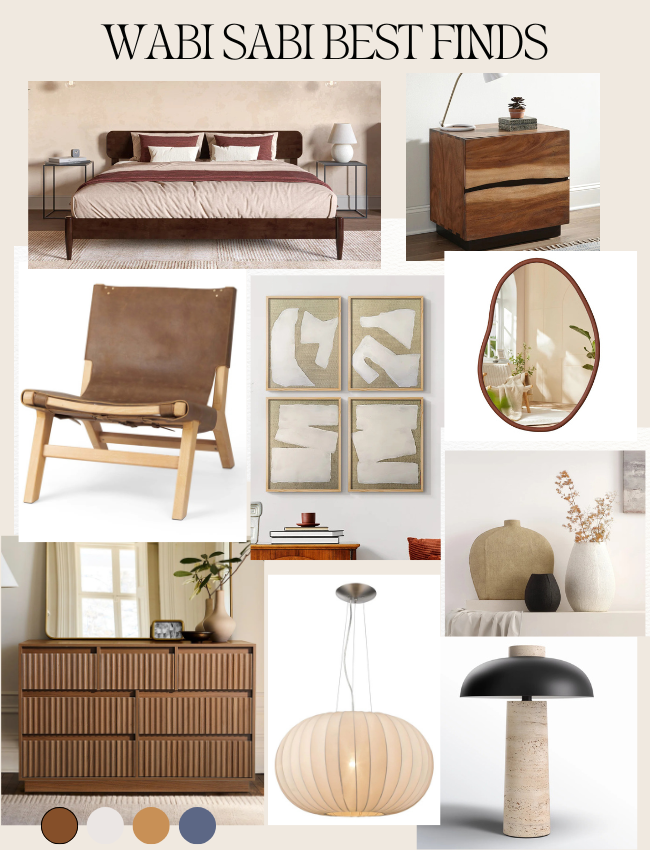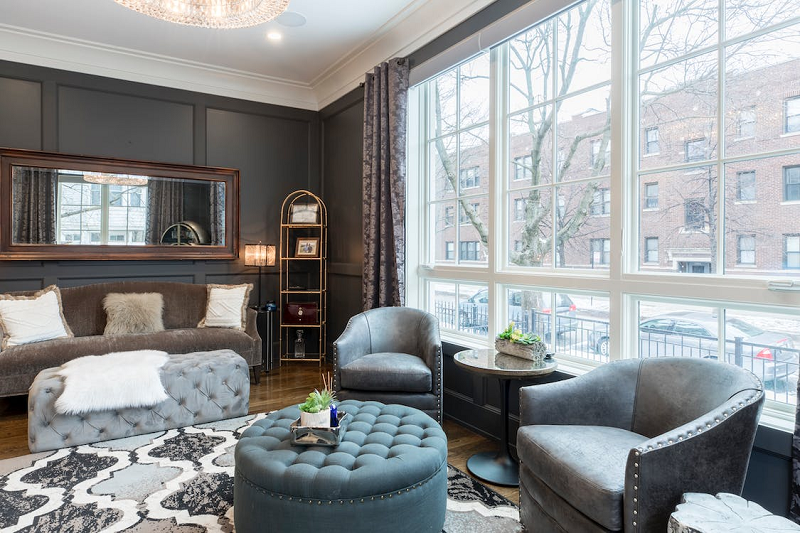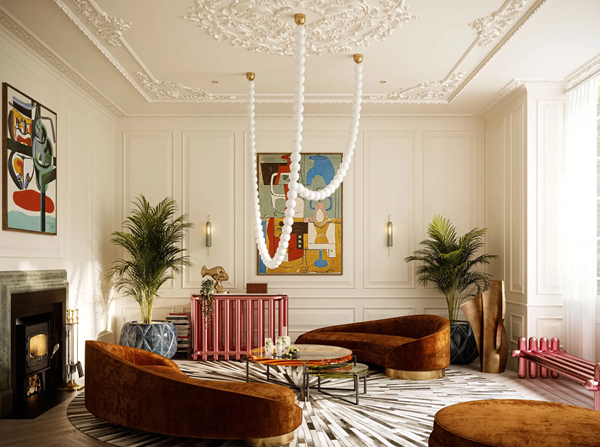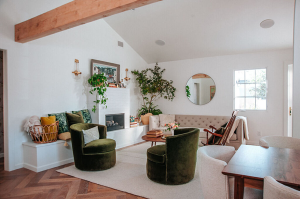[TL;DR] Summary: Discover the art of creating a serene Wabi Sabi bedroom by embracing imperfection, simplicity, and natural elements. Learn how to infuse your space with the essence of Wabi Sabi and cultivate a peaceful sanctuary.
A wabi sabi bedroom is more than a place to sleep—it’s a sanctuary for your soul. Rooted in timeless Japanese philosophy, this design style embraces imperfection, simplicity, and the quiet beauty of natural aging. It invites you to slow down, let go of clutter, and create a space that feels calm, grounded, and deeply personal.

In this guide, I’ll walk you through the essential steps to curate a wabi sabi bedroom that reflects your story, soothes your senses, and transforms your home into a haven of serenity.
I. What’s Wabi Sabi Style?

Wabi Sabi is a traditional Japanese philosophy that embraces the beauty of natural imperfection and the transience of life. It’s not just an interior design style but a way of living that can be applied to our daily surroundings. Have you heard of the Wabi Sabi aesthetics? According to BBC Travel, 65% of respondents outside Japan are familiar with the concept of Wabi Sabi.
The concept originated from 16th-century Japanese tea ceremonies that valued simplicity and authenticity over extravagance. Wabi Sabi in design encourages the use of neutral tones, natural elements like plants, and personal decor pieces, all chosen with intention to create a clutter-free and peaceful environment. It’s about living humbly and in harmony with nature, accepting the lifecycle of everything around us, flaws included.
This philosophy finds elegance in simplicity and allure in the imperfect, transforming living spaces into serene sanctuaries that invite us to embrace the beauty of natural materials, muted colors, and minimalist design. According to a poll done by The Conversation, 80% of respondents appreciate beauty that is “imperfect, impermanent, and incomplete” in nature.
Don’t Miss: How to Style a Bed for an Insta-Worthy Bedroom
II. Key Elements of Wabi Sabi Style

The key elements of Wabi Sabi style are deeply rooted in the appreciation of the natural world and its inherent imperfections. This design philosophy celebrates the beauty of the aged, the weathered, and the imperfect.
It’s about recognizing the profound elegance found in the asymmetry of a hand-thrown pot or the rough texture of untreated wood. Wabi Sabi finds harmony in the contrast between the made and the grown, the new and the old, highlighting the organic patterns and textures that come from embracing the natural aging process.
It encourages us to find contentment in simplicity and to cultivate a space that feels both lived-in and loved. By incorporating elements such as uneven linen, pottery with irregular glazes, and furniture that shows the passage of time, we create an environment that is not only visually appealing but also emotionally resonant, inviting us to slow down and appreciate the beauty in the everyday.
Related Post: Feng Shui Bedroom Decorating Guide
III. Creating a Wabi Sabi Color Palette

Creating a Wabi Sabi color palette is about embracing the hues that nature has bestowed upon us. It’s a palette that reflects the earth, the sky, and everything in between. Here’s how you can create a Wabi Sabi color palette for your bedroom:
- Start with Neutrals: Begin by selecting neutral shades as your base. These can include soft whites, creams, and light grays. These colors are calming and provide a serene backdrop for your Wabi Sabi bedroom.
- Incorporate Earth Tones: Add depth to your palette with earth tones. Think of the colors of stone, soil, and wood. Shades like taupe, beige, ochre, and muted greens are perfect for this.
- Use Muted Colors: To keep the tranquility of the Wabi Sabi aesthetic, choose muted versions of colors. Instead of bright reds or blues, opt for softer, subdued tones like dusty rose or slate blue.
- Add Textural Elements: The Wabi Sabi palette isn’t just about color; it’s also about texture. Consider the tactile quality of your surfaces and fabrics. Linen, raw silk, and wool can add a subtle variety of hues and depth to your space.
- Embrace the Imperfect: Don’t be afraid to include colors that show wear or fading. A rug with sun-bleached patterns or a throw with uneven dye can add character and authenticity to your room.
- Reflect Personal Taste: Finally, your color palette should reflect your personal taste and the emotions you want to evoke in your space. Choose colors that resonate with you and create a sense of peace and comfort.
By following these steps, you’ll create a Wabi Sabi color palette that not only looks beautiful but also feels harmonious and grounded in nature’s imperfect beauty
Related Post: Feng Shui Principles for Harmonious Home Decor
IV. Embrace Imperfection: The Essence of Wabi Sabi Style

Wabi Sabi offers a refreshing alternative. This Japanese philosophy invites us to slow down and appreciate the quiet charm of imperfection. A Wabi Sabi bedroom isn’t about curated perfection—it’s about cultivating a space that feels lived-in, soulful, and deeply personal.
Interior designer Lauren Summers captures this sentiment perfectly: “There’s something so calming about spaces that are simple, intentional, and full of character. That’s why I love Wabi Sabi—it’s not just a style, it’s a mindset.”
And the numbers back it up. According to a 2025 Houzz survey, 42% of homeowners now prioritize natural materials and imperfect finishes when redesigning their bedrooms, citing emotional comfort and authenticity as top motivators. The steps below will guide you in curating a bedroom that captures the essence of Wabi Sabi decor.
1. Mindful Selection of Furniture and Decor
The foundation of a Wabi Sabi bedroom lies in what you choose to bring into it—and why. Every item should feel intentional, not just decorative. Imperfect pieces, natural textures, and personal touches create a space that feels warm and real.
As Kelly Wearstler, notes, “Imperfections are what make a piece truly unique and special.”
– Choose Imperfect Pieces Intentionally
- Purposeful Flaws: Seek out furniture and decor items with visible nicks, scratches, or weathered textures. These imperfections tell stories and add character to your space.
- Vintage Finds: Scour thrift stores or antique markets for unique pieces. A chipped ceramic vase or a slightly worn wooden chest can become cherished focal points.
– Minimalism with Purpose
- Low-Profile Bed Frame: Opt for a bed frame that sits close to the ground. It symbolizes simplicity and invites a sense of groundedness.
- Uncluttered Surfaces: Keep nightstands and dressers free from unnecessary clutter. Each item should have a purpose—a book you’re currently reading, a small plant, or a cherished photo.
– Embrace Natural Materials
- Wood: Choose wooden furniture with visible grain patterns. The knots and irregularities add warmth and authenticity.
- Stone: Incorporate stone accents—a smooth river rock as a paperweight or a granite lamp base.
- Textiles: Soft linen or cotton bedding in earthy tones complements the Wabi Sabi aesthetic.
Pro Tip: Stick to a 3-color rule—one base (white or cream), one earthy tone (taupe or moss), and one accent (muted green or rust) to keep your palette cohesive and calming.
– Incorporate Personal Touches
- Handmade Ceramics: Display a hand-thrown ceramic bowl or mug. The slight asymmetry and variations in glaze create a sense of connection to the artisan.
- Worn-in Rugs: Vintage rugs with faded colors and frayed edges evoke a sense of history and lived experience.
Quick Tip: Choose one statement piece—like a low-profile wooden bed—and let it anchor the room. Everything else should support, not compete.
2. The Art of Arrangement
How you arrange your space is just as important as what you put in it. Wabi Sabi favors intentional placement and the power of negative space. It’s about letting your room breathe and evolve naturally.
– Intentional Placement
- Negative Space: Leave room for emptiness. Wabi Sabi embraces simplicity, so avoid overcrowding your bedroom.
- Unconventional Arrangements: Place a single flower in an old glass bottle or hang a simple branch on the wall. These understated arrangements exude elegance.
– Incorporate Weathered Surfaces
- Aged Wood: If you have wooden beams or exposed brick, celebrate their natural patina. Don’t cover them up—let them breathe.
- Faded Paint: Instead of repainting, consider leaving a wall with its faded, imperfect paint. It tells a story of time passing.
Quick Tip: Use painter’s tape to map out wall art placement before hanging. This helps you visualize negative space and avoid overcrowding.
3. Lighting and Shadows
Lighting in a Wabi Sabi bedroom should feel soft, poetic, and ever-changing. It’s not just about illumination—it’s about atmosphere and emotion.
– Choose Soft, Diffused Light
- Paper Lanterns: Hang delicate paper lanterns for a soft glow. Their irregular shapes create beautiful shadows.
- Candles: Use unscented candles in simple holders. The flickering flame adds warmth and serenity.
– Play with Shadows
- Natural Light: Position your bed near a window to capture changing sunlight. The interplay of light and shadow is poetry in motion.
- Silhouettes: Hang a piece of delicate fabric in front of a window. As the sun sets, it casts intricate silhouettes on your walls.
Pro Tip: Swap harsh overhead lights for layered lighting—a mix of lanterns, candles, and natural light creates a more tranquil, Wabi Sabi-friendly atmosphere.
Remember, Wabi Sabi isn’t about achieving perfection—it’s about embracing the perfectly imperfect. Let your bedroom breathe, evolve, and tell its own story.
Trending Post: How To Decorate Dark Feminine Bedroom
V. Simplicity Reigns Supreme: Crafting Your Wabi Sabi Bedroom

In a Wabi Sabi bedroom, less truly is more. Simplicity isn’t just a design choice—it’s a way of life. By stripping away excess and focusing on what matters, you create a space that feels calm, intentional, and deeply restorative. This isn’t minimalism for minimalism’s sake—it’s about curating peace.
1. Minimalistic Furniture and Layout
The layout of a Wabi Sabi bedroom should feel effortless and grounded. Furniture is chosen not for trendiness, but for its quiet presence and natural materials. Every piece should serve a purpose and contribute to the room’s serenity.
– Choose A Low-Profile Bed Frame
- Choose a bed frame that sits close to the ground. It symbolizes simplicity and invites a sense of groundedness.
- Opt for natural materials like wood or bamboo. Their organic textures align perfectly with Wabi Sabi aesthetics.
– Uncluttered Surfaces
- Purposeful Placement: Each item in your bedroom should have a purpose. Keep nightstands and dressers free from unnecessary clutter.
- Less Is More: Resist the urge to overcrowd your space. A few well-chosen pieces create a calming atmosphere.
Quick Tip: Choose one statement piece—like a low-profile wooden bed—and let it anchor the room. Everything else should support, not compete.
2. Neutral Tones and Natural Elements
Color and texture play a subtle but powerful role in Wabi Sabi design. The palette is muted, earthy, and soft—designed to soothe rather than stimulate. Natural elements like plants and reclaimed wood add life and authenticity.
– Choose A Muted Color Palette
- Earthy Hues: Embrace shades of beige, taupe, and muted gray. These colors evoke a sense of calm and harmony.
- Whites and Creams: Use white or cream as your base color. It reflects light and creates an airy feel.
– Incorporate Soft, Organic Bedding
- Linen and Cotton: Layer your bed with soft, natural textiles. Linen and cotton sheets in earthy tones add depth and texture.
- Imperfectly Perfect: Don’t worry about perfectly ironed sheets. Embrace the gentle wrinkles—they tell stories of restful nights.
– Add A Nature’s Touch
- Potted Plants: Integrate nature into your bedroom. A potted fern or a succulent on your windowsill brings life and tranquility.
- Reclaimed Wood: Consider wooden furniture made from reclaimed materials. The knots and grain patterns add character.
Pro Tip: Stick to a 3-color rule—one base (white or cream), one earthy tone (taupe or moss), and one accent (muted green or rust) to keep your palette cohesive and calming.
3. Artful Arrangement and Negative Space
Wabi Sabi thrives on intentional emptiness. It’s not about filling every wall or corner—it’s about letting your space breathe. Arrangement becomes an art form, where even a single object can carry emotional weight.
– Intentional Placement
- Negative Space: Leave room for emptiness. Wabi Sabi celebrates simplicity, so avoid cluttering every corner.
- Unconventional Beauty: Hang a single piece of artwork or a framed textile. Let it breathe and stand out.
– Opt-in For Weathered Surfaces
- Aged Wood: If you have wooden beams or exposed brick, cherish their imperfections. The patina tells a story.
- Faded Paint: Instead of repainting, appreciate the faded walls. They hold memories and evoke a sense of time passing.
Quick Tip: Use painter’s tape to map out wall art placement before hanging. This helps you visualize negative space and avoid overcrowding.
4. Soft Lighting and Shadows
Lighting in a Wabi Sabi bedroom should feel gentle and poetic. It’s not about brightness—it’s about mood. Shadows, silhouettes, and flickering flames create a sense of intimacy and stillness.
– Add Paper Lanterns and Candles
- Soft Glow: Hang delicate paper lanterns for a warm, diffused light. Their irregular shapes create beautiful shadows.
- Candlelit Nights: Use unscented candles in simple holders. The flickering flame adds serenity.
– Play with Natural Light
- Sunset Views: Position your bed near a window. Let the changing sunlight dance across your room.
- Silhouettes: Hang a sheer curtain. As the sun sets, it casts delicate silhouettes on your walls.
Pro Tip: Swap harsh overhead lights for layered lighting—a mix of lanterns, candles, and natural light creates a more tranquil, Wabi Sabi-friendly atmosphere.
Remember, your Wabi Sabi bedroom isn’t about perfection—it’s about embracing the beauty of imperfection. Let simplicity be your guide, Lena. Your sanctuary awaits!
Also: How to Choose a Wall Color: A No Fail Formula
VI. Connect with Nature: The Soulful Essence of Wabi Sabi Style

In a Wabi Sabi bedroom, nature isn’t just a backdrop—it’s a co-creator. From the texture of reclaimed wood to the quiet presence of a bonsai tree, every element invites you to reconnect with the earth. This style encourages you to slow down, breathe deeply, and let natural beauty shape your space.
1. Natural Materials and Organic Forms
Nature’s textures and forms bring warmth, grounding, and authenticity to your bedroom. Whether it’s the grain of wood or the curve of a stone, these materials tell stories of time and transformation.
– Incorporate Wood and Stone
- Wooden Furniture: Opt for wooden bed frames, side tables, and dressers. The grain patterns and knots tell stories of growth and resilience.
- Stone Accents: Place smooth river rocks or pebbles in a decorative bowl. Their tactile presence grounds you.
– Choose Potted Plants
- Greenery: Integrate nature into your bedroom with potted plants. A snake plant, peace lily, or succulent adds life and tranquility.
- Bonsai Tree: If you have space, consider a bonsai tree. Its miniature form embodies the essence of Wabi Sabi.
– Opt-in for Reclaimed Wood
- Bedside Shelves: Install reclaimed wood shelves for books or small decor items. The weathered texture adds character.
- Headboard: Craft a headboard from reclaimed wood planks. Each knot and imperfection tells a silent tale.
Quick Tip: Group natural elements in odd numbers—like three stones or five branches. Odd groupings feel more organic and visually balanced.
2. Embrace Negative Space
Wabi Sabi design thrives on restraint. By leaving room for emptiness, you allow nature—and your thoughts—to breathe. Asymmetry and irregularity add a sense of organic flow
– Openness and Simplicity
- Minimalistic Arrangement: Leave room for emptiness. Avoid overcrowding your bedroom.
- Uncluttered Surfaces: Let your dresser or vanity breathe. Only display items that resonate with you.
– Asymmetry and Irregularity
- Rocks and Pebbles: Arrange stones in an irregular pattern. The asymmetry feels organic and harmonious.
- Branches and Twigs: Hang a single branch on the wall. Its natural curves create visual interest.
Pro Tip: Take a photo of your room and convert it to black and white. This helps you spot clutter and refine your use of space and asymmetry
3. Weathered Beauty
Time leaves its mark—and Wabi Sabi celebrates it. Weathered textures like moss, rust, and faded fabrics evoke a sense of ancient tranquility and lived experience.
– Incorporate Moss and Patina
- Moss-Covered Stones: Scatter moss-covered stones around your room. They evoke a sense of ancient tranquility.
- Rusted Metal Accents: An old lantern or rusted metal sculpture adds a touch of nostalgia.
– Choose Faded Textiles
- Worn-In Fabrics: Choose curtains or bed linens with a faded, time-worn look. They whisper stories of comfort and rest.
Quick Tip: Use a mix of textures—soft, rough, faded—to evoke age and depth. Layering materials like rusted metal and worn linen adds emotional richness.
4. Soft Light and Natural Views
Lighting in a Wabi Sabi bedroom should mimic nature—gentle, shifting, and poetic. Let sunlight and moonlight shape your space, and use soft fixtures to enhance the mood.
– Go For Paper Lanterns and Candlelight
- Soft Glow: Hang paper lanterns for gentle illumination. Their irregular shapes cast soothing shadows.
- Candlelit Evenings: Light unscented candles. Their flickering flames connect you to the primal elements.
– Window Placement
- Morning Sun: Position your bed near a window. Wake up to the sun’s golden embrace.
- Moonlit Nights: Let the moonlight filter through sheer curtains. It’s a celestial lullaby.
Pro Tip: Install sheer curtains with a loose weave. They catch light beautifully and create ever-changing silhouettes throughout the day.
Your Wabi Sabi bedroom is an invitation to slow down, breathe, and listen to the whispers of nature. Let the rustle of leaves, the grain of wood, and the play of light guide you toward serenity. This is where simplicity meets soul.
Also: How To Set Up A Small Home Gym

VII. Soft, Organic Bedding: Cozy Comfort for Your Wabi Sabi Bedroom

In a Wabi Sabi bedroom, comfort isn’t just physical—it’s emotional. The textures you sleep in should feel natural, grounding, and imperfectly beautiful. By choosing organic materials and embracing softness, you create a cocoon of calm that invites deep rest and quiet joy.
1. Linen and Cotton Bedding
Linen and cotton are the soulmates of Wabi Sabi bedding. Their natural textures, muted tones, and breathable qualities make them ideal for creating a sleep space that feels both luxurious and lived-in.
– Linen Sheets
- Earth Tones: Choose linen sheets in muted, earthy colors—think moss green, warm beige, or soft gray.
- Texture Matters: Linen’s slightly rough texture adds depth and character. Embrace the imperfections—it’s part of the Wabi Sabi charm.
– Cotton Comfort
- Organic Cotton: Opt for organic cotton bedding. It’s gentle on your skin and the environment.
- Layering: Layer your bed with a lightweight cotton blanket or quilt. The softness invites restful slumber.
Quick Tip: Wash linen sheets with a touch of baking soda. It softens the fibers naturally and enhances their lived-in texture.
2. Embrace Wrinkles
In Wabi Sabi, wrinkles aren’t flaws—they’re features. A bed that looks slightly rumpled feels more inviting, more human, and more real.
– Wrinkled Beauty
- Wabi Sabi Aesthetics: Don’t fret over perfectly ironed sheets. Let the gentle wrinkles tell stories of peaceful nights.
- Natural Elegance: Imagine waking up to a bed that looks effortlessly inviting—like a cozy cloud.
Pro Tip: Style your bed with a gentle hand. Instead of smoothing every fold, fluff pillows and let the sheets fall naturally—it’s more inviting and true to Wabi Sabi.
3. Pillows and Cushions
Pillows and cushions add layers of comfort and texture. Choose natural fillings and handcrafted details to deepen the sensory experience of your bedroom.
– Natural Fillings
- Wool Pillows: Wool-filled pillows offer natural resilience and breathability. They adapt to your head’s contours.
- Organic Cotton Covers: Slip your pillows into organic cotton pillowcases. Softness meets sustainability.
– Floor Cushions
- Handwoven Comfort: Place a large crochet floor cushion near your window. It’s perfect for reading or meditation.
- Wabi Sabi Texture: Embrace the irregularities—it’s like sitting on a piece of nature.
Quick Tip: Choose one oversized floor cushion with a handmade or handwoven finish. It becomes both a visual anchor and a cozy retreat.
4. Blankets and Throws
Blankets and throws are more than functional—they’re emotional anchors. Choose materials that feel warm, grounding, and timeless.
– Wool Warmth
- Wool Blankets: Choose a wool blanket with a wabi-sabi pattern. It’s both functional and decorative.
- Natural Insulation: Wool keeps you warm in winter and cool in summer. Plus, it’s naturally fire-resistant.
Pro Tip: Drape your throw asymmetrically across the bed or chair. It adds movement and softness without feeling staged.
Your Wabi Sabi bedroom is a sanctuary of softness, simplicity, and soul. Let your bedding cradle your dreams, wrap you in comfort, and remind you that beauty lives in the imperfect.
Also: Aesthetic Work Desk Setup Ideas
VIII. Wabi Sabi Bedroom Best Finds
I’ve handpicked the most soul-soothing, Wabi Sabi–worthy furniture from Wayfair so you don’t have to spend hours scrolling or second-guessing.
These pieces blend natural beauty with timeless simplicity—and they won’t wreck your budget. Click through, shop your favorites, and start building the bedroom sanctuary you deserve.
If you are ready to refresh your Wabi Sabi Bedroom? Shop my top Wayfair decor picks below and instantly elevate your bedroonm’s style!

Low Profile Bed Frame | 2-Drawer Nightstand | Leather Sling Chair | Wall Art (set of 4) | Assymetrical Mirror | 7- Drawer Dresser | Pendant Ceiling Light | Ceramic Vases (set of 3) | Stone Table Lamp
Most Popular Post:
10 Surprising Benefits of Printable Wall Art
How to Choose The Right TV Size to Decorate Your Living Room
The ultimate Smart Home Design Guide: Automate your life
Tips for Home Decorating on a Budget: Where to Splurge and Save
10 Best Couch Colors That Make a Room Look Bigger
Conclusion
the Wabi Sabi bedroom is a celebration of life’s imperfections and an embrace of its transient nature. It’s a place where furniture tells stories, where colors soothe the soul, and where every element is chosen with intention. It’s a retreat that reflects the essence of our being—flawed, beautiful, and real.
By following the steps outlined in this post, you can transform your bedroom into a Wabi Sabi haven, a space that resonates with the rhythms of nature and the heartbeat of simplicity. Remember, the goal is not to create a picture-perfect room but to curate a space that speaks to your journey, your dreams, and your peace.
So, take a deep breath, let go of perfection, and step into the world of Wabi Sabi. Your bedroom is not just a place to sleep; it’s a canvas for your soul, a place where you can truly be at home.
Wabi Sabi Bedroom-FAQs
Q: Can modern amenities blend with Wabi Sabi style?
A: Yes, modern amenities can complement the Wabi Sabi style when chosen thoughtfully and integrated seamlessly into the space.
Q: How often should I change my Wabi Sabi decor?
A: Change your decor as you feel necessary. Wabi Sabi is about evolution and embracing the changes that come with time.
Q: Can I apply Wabi Sabi principles to other rooms in my home?
A: Absolutely! Wabi Sabi can be a guiding philosophy for your entire living space, promoting harmony and tranquility throughout.
Embrace the Wabi Sabi way, and let your bedroom be a reflection of the perfectly imperfect journey of life.
Subscribe To the Newsletter!
Subscribe now for an endless feed of inspirational women’s cave decor ideas, pampering rituals, and more tips for curating your ultimate escape. Let’s start making your cozy refuge a reality – you so deserve this!
CATCH THE LATEST IN HOME DECOR TRENDS:

Steal These 16 Expert-Approved Decorating Secrets

How To Accessorize Your Living Room

Small Space? 10 Ways To Make A Room Appear Bigger

Make Your space Look Expensive
GET CAUGHT UP ON ALL THE INSPIRING DECOR TIPS:

18 Fresh Decorating Ideas To Update Your Fireplace

How To Create An Art Gallery Wall


